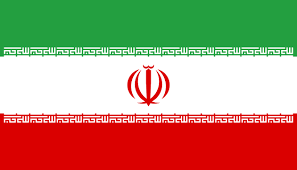Language/Iranian-persian/Culture/Lesson-11:-Persian-holidays-and-celebrations
 Հայերէն
Հայերէն Български език
Български език 官话
官话 官話
官話 Hrvatski jezik
Hrvatski jezik Český jazyk
Český jazyk Nederlands
Nederlands English
English Suomen kieli
Suomen kieli Français
Français Deutsch
Deutsch עברית
עברית हिन्दी
हिन्दी Magyar
Magyar Bahasa Indonesia
Bahasa Indonesia Italiano
Italiano 日本語
日本語 Қазақ тілі
Қазақ тілі 한국어
한국어 Lietuvių kalba
Lietuvių kalba Νέα Ελληνικά
Νέα Ελληνικά Şimali Azərbaycanlılar
Şimali Azərbaycanlılar Język polski
Język polski Português
Português Limba Română
Limba Română Русский язык
Русский язык Српски
Српски Español
Español العربية القياسية
العربية القياسية Svenska
Svenska Wikang Tagalog
Wikang Tagalog தமிழ்
தமிழ் ภาษาไทย
ภาษาไทย Türkçe
Türkçe Українська мова
Українська мова Urdu
Urdu Tiếng Việt
Tiếng ViệtHello and welcome to the eleventh lesson on Persian culture and customs. Today, we will be exploring some of the most important Iranian holidays and celebrations, their origins, meanings and traditions. As an Iranian Persian language teacher with 20 years of experience, I believe that learning about a culture's festivals and customs is crucial to gaining a deeper understanding of its people and history.
Iranian Holidays and Celebrations
Iran has a rich and diverse culture, which is reflected in its many national and regional holidays and celebrations throughout the year. These events are often based on ancient Persian traditions and pre-Islamic rituals, combined with Islamic and Shia practices. Iranian hospitality, generosity and love for social gatherings are also key elements of these festivities.
Nowruz - Persian New Year
Nowruz, which means “new day” in Persian, is the most important celebration in Iranian culture and marks the beginning of the Persian calendar year on the spring equinox, usually around March 21st. This holiday has been celebrated for over 3000 years and symbolizes rebirth, fertility, and renewal of natural and human life. Preparations for Nowruz begin weeks before the actual holiday, with spring cleaning, shopping, and decorating the house with flowers, colored eggs, and other traditional items.
On the eve of Nowruz, family members gather around the “haft-sin” table, a special arrangement of seven symbolic items that each represent a specific wealth or value, such as “sabzeh” (sprouted wheat or lentil representing growth), “senjed” (sweet and sour fruit symbolizing love), and “serkeh” (vinegar representing patience and age). They also recite poetry, exchange gifts, and sing and dance until the early hours of the morning.
During the 13 days of Nowruz, people visit friends and family, hold parties, and perform traditional activities, such as “chaharshanbe soori” (a fire-jumping ceremony held on the last Tuesday night before Nowruz) and “sizdah be dar” (a nature picnic on the 13th day of spring).
Eid-e-Fitr - End of Ramadan
Eid-e-Fitr, or “festival of breaking the fast”, is a religious celebration that marks the end of the holy month of Ramadan, the ninth month of the Islamic lunar calendar, during which Muslims fast from dawn until sunset. This holiday is usually observed in late May or early June, depending on the sighting of the new moon.
In Iran, Eid-e-Fitr is a three-day public holiday, during which people attend mass prayers in mosques, exchange greetings and sweets, visit their relatives, and donate to the poor and needy. They also prepare special traditional dishes, such as “sholeh zard” (a sweet and saffron-flavored rice pudding), and wear new clothes or accessories.
Eid-e-Qorban - Feast of Sacrifice
Eid-e-Qorban, or “festival of sacrifice”, is another important religious holiday in Iran, which commemorates the willingness of Prophet Ibrahim (Abraham) to sacrifice his son Ismail (Ishmael) as an act of obedience to God, and the eventual substitution of a ram in his place. This event is also observed by Muslims around the world and usually occurs at the end of the annual hajj pilgrimage to Mecca.
In Iran, Eid-e-Qorban is a four-day public holiday, during which people attend mass prayers in mosques, sacrifice an animal (usually a sheep or a goat), and distribute the meat among their family, friends, and the poor. They also wear new clothes, decorate the house, and hold family gatherings and feasts.
Yalda Night - Winter Solstice
Yalda, also known as Shab-e-Yalda or “night of birth”, is an ancient Persian festival celebrated on the longest night of the year, usually around December 21st, which coincides with the winter solstice. This holiday has its roots in Zoroastrianism, and represents the victory of light over darkness, good over evil, and the return of the sun.
On Yalda night, people stay awake until midnight or later, reading poetry, storytelling, reciting divinations, playing games, and eating traditional fruits and nuts, such as pomegranate, watermelon, and pistachio. The elderly or experienced members of the family or society guide the youth with their knowledge about history, poetry, and life experiences.
Conclusion
In this lesson, we have learned about some of the most significant holidays and celebrations in Iranian culture, including Nowruz, Eid-e-Fitr, Eid-e-Qorban, and Yalda Night, which reflect the Iranian people's deep connection to nature, faith, and community. By observing these holidays and their traditions, Iranians maintain a strong link to their cultural heritage, while also keeping their spirits high and their bonds strong.
I hope that you have enjoyed learning about these festivals and traditions and that you will appreciate them even more when you encounter them in real life. Thank you for joining me today, and I'll see you in the next lesson.
Sources
Related Lessons
- The Practice of Taarof in Iran
- Transportation
- Lesson 23: Persian civilization and ancient history
- The Bakhtiari
- Official Farsi and informal Farsi
- Communicate
- Haft sin
- The Iranian wedding
- Iranian calendar
- Lesson 16: Persian poetry and classical literature


